The ruins of the ancient Mayan civilization can be found all over the Yucatán and are the most interesting thing to experience on the Mexican peninsula. Follow the footsteps of the Mayans with us.
Mayan civilization on the Yucatán Peninsula
The Mayan civilization was one of the most advanced cultures in the Western Hemisphere, at least until Europeans discovered North America.
The Maya had their greatest heyday between 300 and 900 AD and their empire extended over what is now southern Mexico, Guatemala, Honduras and northern Belize. In all, there were more than 40 city states, and those that survived under the jungle cover are now designated World Heritage Sites.
Mayan cities are full of stone temples, pyramids, playgrounds and residential quarters. Cities primarily served as home to local leaders, kings and for religious activities.
The Mays are known especially for their excellent knowledge of mathematics and astronomy. These sciences were firmly linked to the worship of the Mayan gods.
Let’s take a look together at seven large Mayan cities that are still preserved and can be visited today. If you are going to the Yucatán and plan to follow in the footsteps of the Maya, we recommend booking at least 14 days.
Chichen Itza – the new wonder of the world
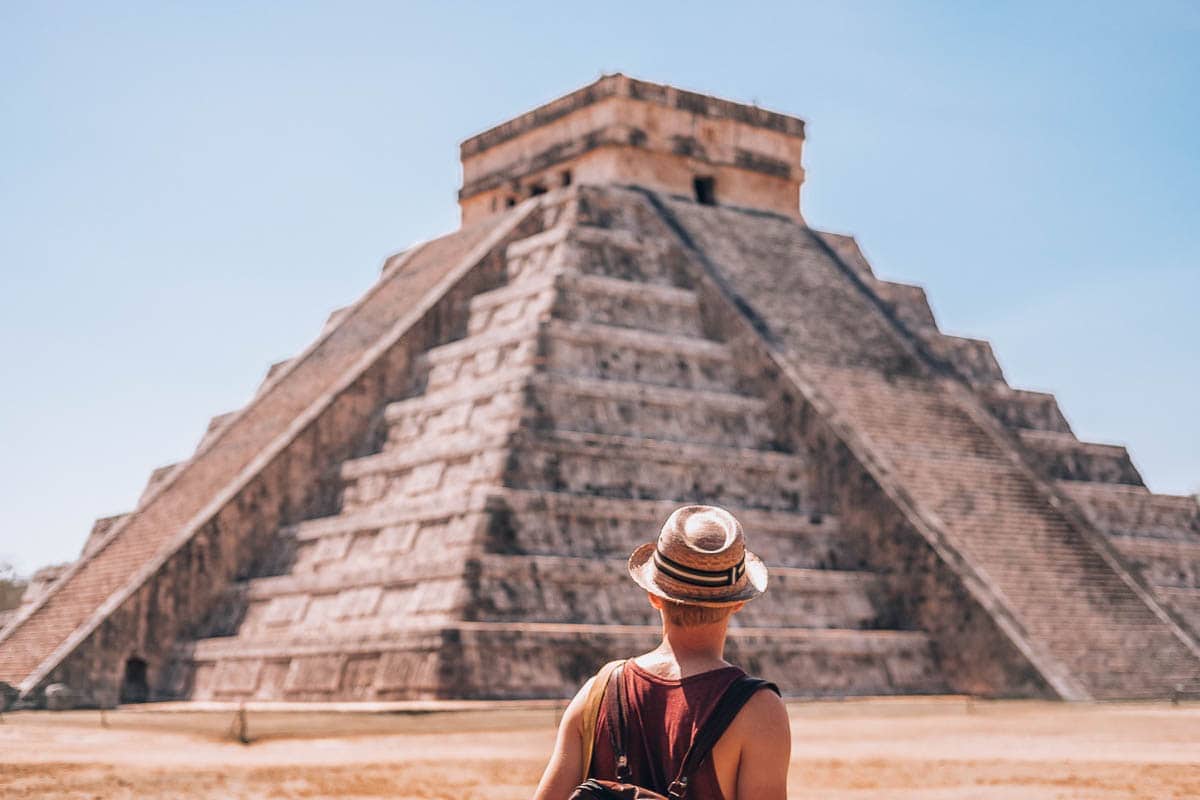
Chichen Itza is the most visited and the most expensive ruins in the entire Yucatán, but there’s a reason for that. There are a total of 18 restored buildings, the most famous of which is the Kukulcan pyramid.
On the days of the equinoxes (March 21 and September 21), the setting sun creates a perfect shadow that forms the silhouette of a serpent descending on the steps of the pyramid. Under the pyramid there is also a cave with an underground lake, but unfortunately you can’t go there.
In the town complex you will find one of the best preserved areas where the famous religious ball game Tlachtli was played. Apparently, after the game was over, either the captain or one entire team was sacrificed to the gods in a nearby cenote.
Another interesting building is the so-called Observatory, whose roof is dome-shaped and not fully enclosed. It was probably used by Mayan astrologers for stargazing.
- Admission: 480 pesos / 577 CZK
- Nearest town: Valladolid, Playa del Carmen, Cancún
- Opening hours: 9:00 – 17:00, night show from 19:00 or 20:00 depending on the season
- Website:
Zona Arqueológica de Chichén Itzá
Tulum – port city with beach
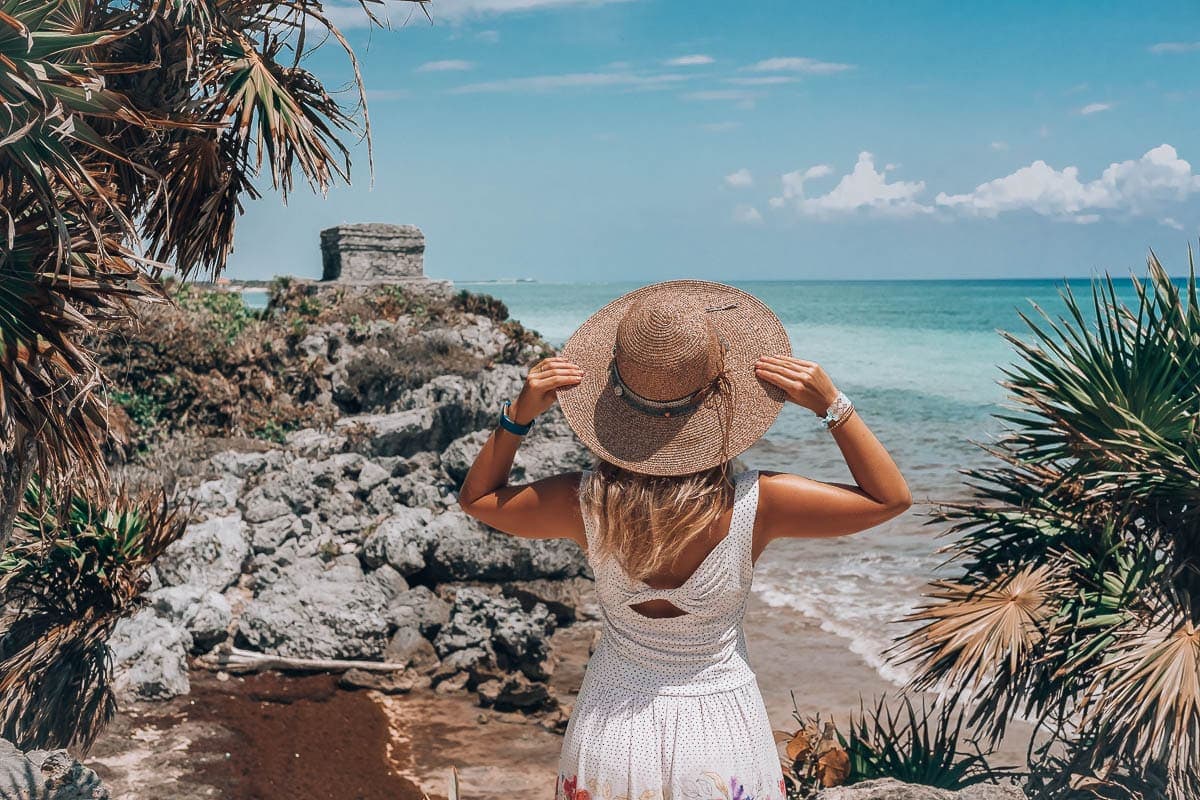
The Mayan city on the site of today’s Tulum (130 kilometres south of Cancún) was a seaport with its own extensive beach and a defensive wall that encircles the city on three sides.
The buildings here are very well preserved, but unlike in less visited cities, they are not in the jungle. Therefore, we recommend that you start your tour early in the morning, before the intense heat sets in.
- Admission: 70 pesos / 84 CZK
- Nearest town: Tulum, Playa del Carmen, Cancún
- Opening hours: 8:00 – 17:00, evening/night tours possible
- Website:
Zona Arqueológica de Tulum
Coba – accessible ruins without tourists
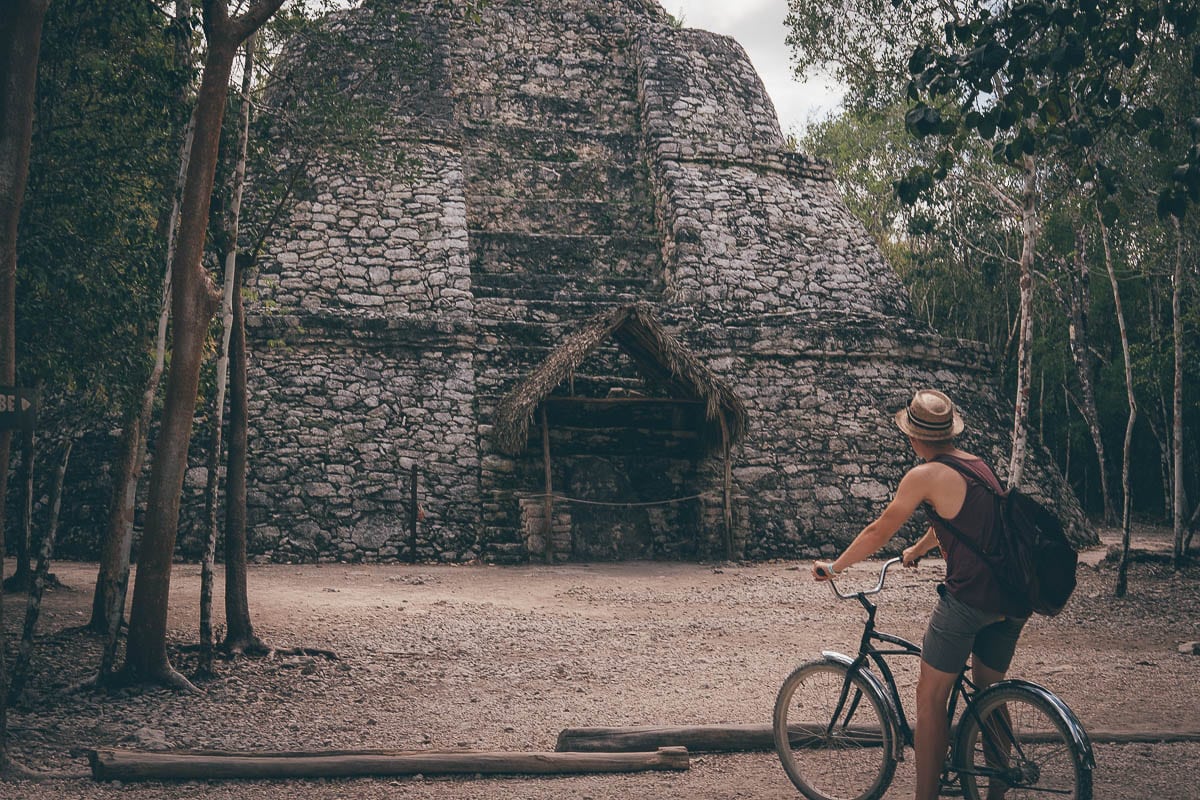
Archaeologists believe that the city of Coba used to be extremely important to the Maya, but has not yet become much of a tourist destination. That’s why it’s possible to climb the highest pyramid and enjoy many of the buildings in solitude.
In addition to the iconic Ixmoja pyramid, which measures 42 metres, there are several well-preserved playgrounds and smaller buildings. Most of the city is still inaccessible and covered in dense jungle.
- Admission: 75 pesos / 100 CZK
- Nearest town: Tulum, Playa del Carmen, Valladolid
- Opening hours: 8:00 – 17:00
- Website:
Zona Arqueológica de Coba
Uxmal – unique ruins near Merida
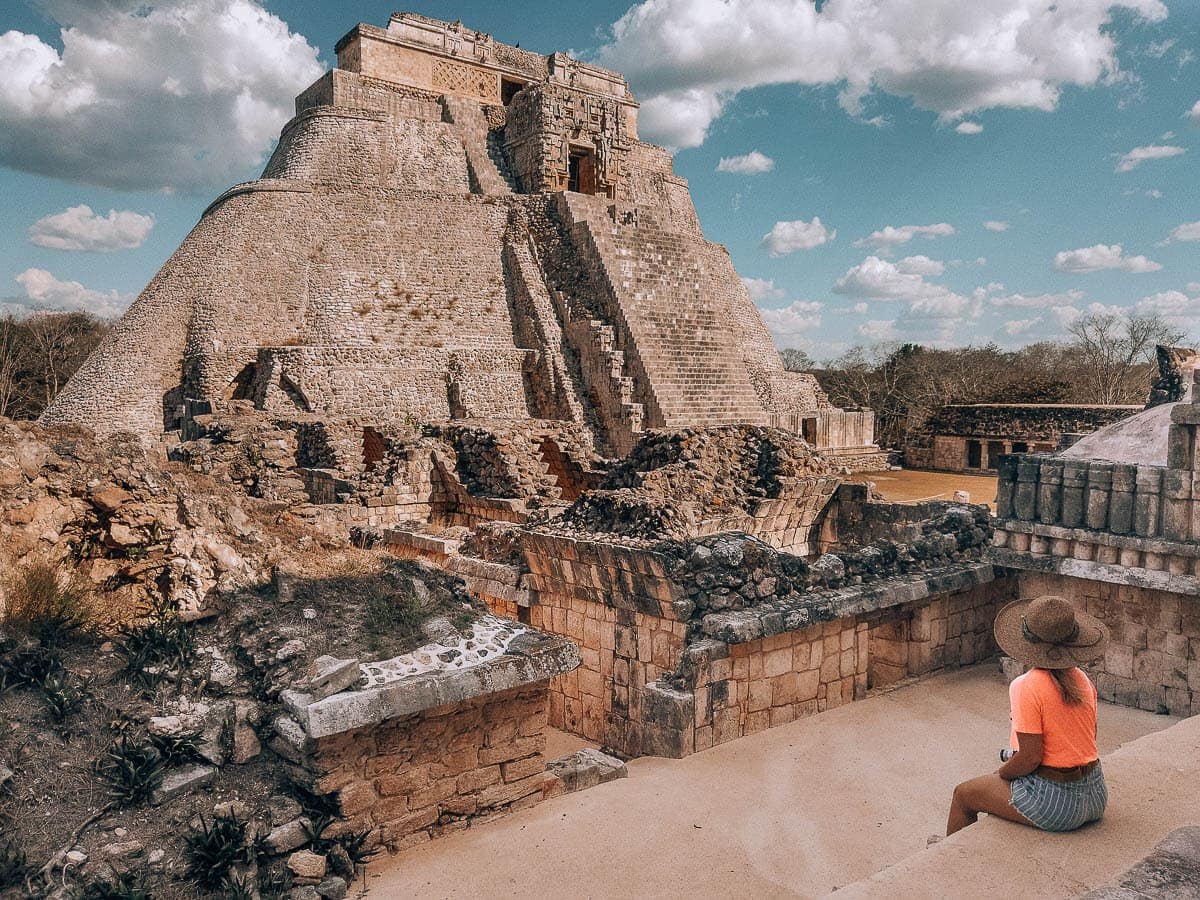
The city of Uxmal (pronounced Oshmal) was one of the most important Mayan cities. It was built during the fifth and sixth centuries, but excavations show that the site was inhabited as early as the eighth century BC.
Interestingly, the city was built entirely in the Mayan Puuc style. This is strange because the smaller towns in the area show signs of several styles as local cultures influenced each other.
The most prominent building is the Pyramid of the Magician, which has a total of four annexes.
- Admission: 470 pesos / 570 CZK
- Nearest town: Campeche, Merida
- Opening hours: 8:00 – 17:00
- Website:
Zona Arqueológica de Uxmal
Calakmul – a jewel in the middle of the jungle
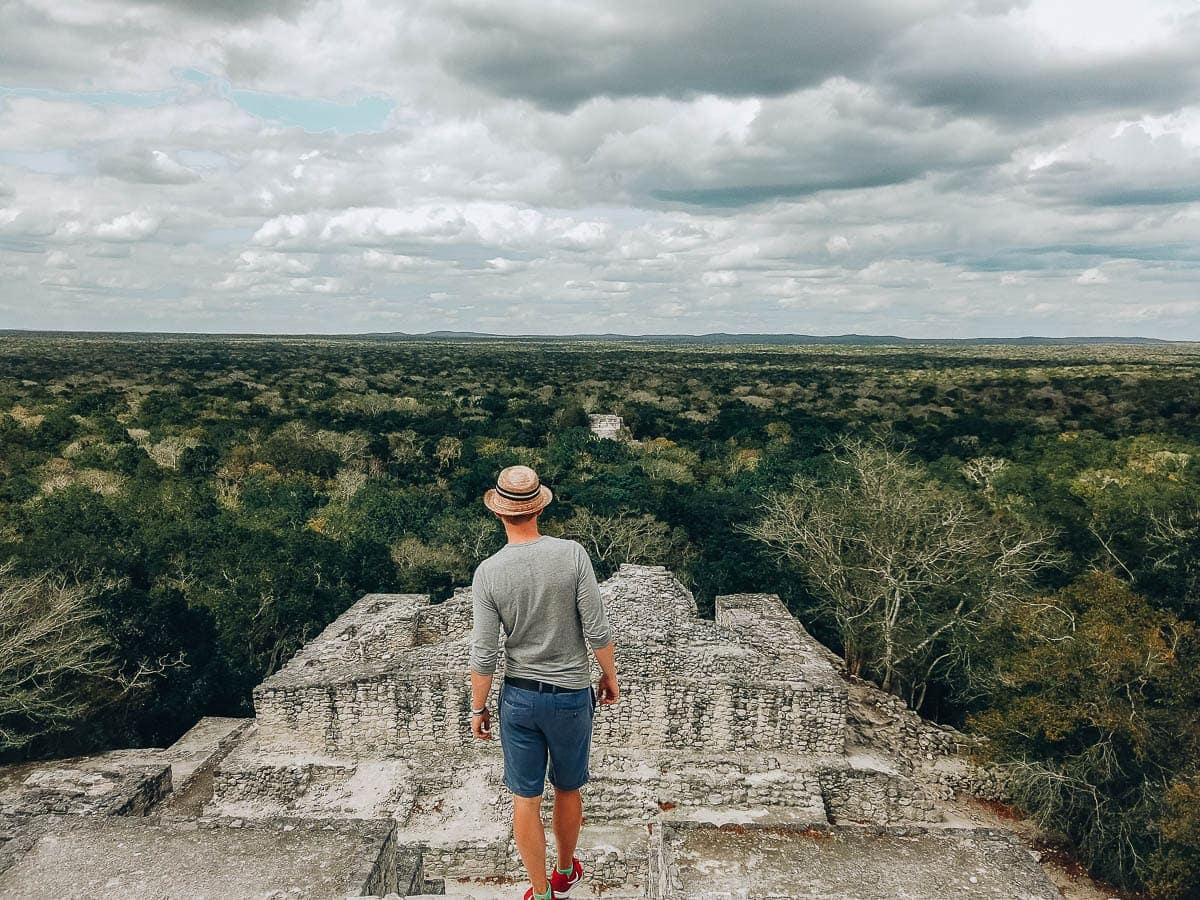
Calakmul is one of the city complexes that are really hard to reach for the average tourist. It lies 60 km from the nearest tarmac road and is a three-hour drive from the nearest major cities. But all the more so has it retained its old atmosphere.
This Mayan city is huge, so make a day of it. In addition to countless smaller buildings in the jungle, there are also two gigantic pyramids, one of which is the second largest Mayan pyramid ever discovered. It measures 55 metres in height and of course you can climb it.
During our visit, we shared the entire complex with only thirty tourists, so we enjoyed most of the views all by ourselves. Only two families of howler monkeys (extremely loud monkeys) kept us company.
- Admission: 75 pesos / 90 CZK
- Nearest town: Xpujil, Campeche
- Opening hours: 8:00 – 17:00
- Website:
Zona Arqueológica de Calakmul
Becan – ruins right by the road
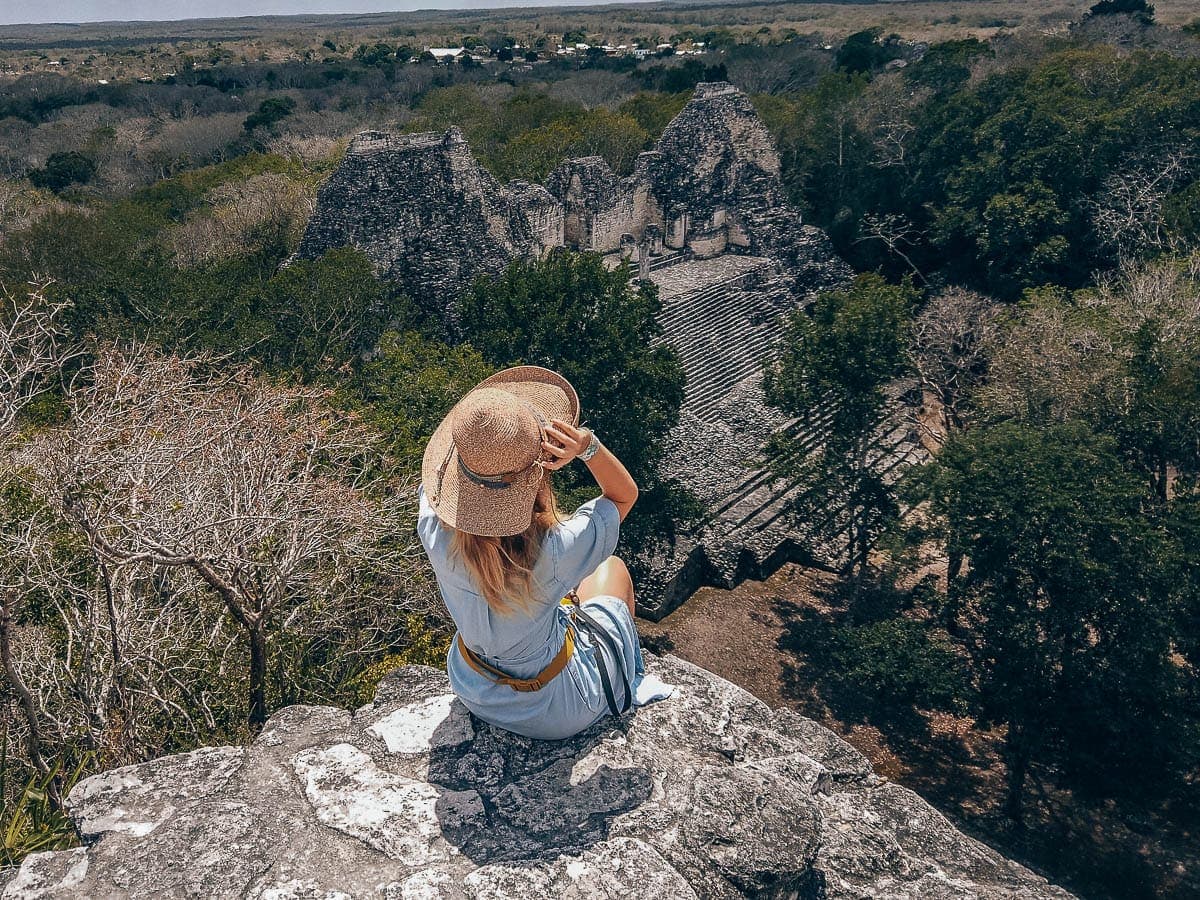
The town of Becan was only discovered in 1934 and most of the buildings still lie deep beneath centuries of earth. Although you can see the main pyramid directly from the busy road, few people stop here.
We walked among more than 20 exposed buildings and pyramids all alone, only a Mexican old man appeared and took us in his arms and showed us around the city in Spanish.
Becan is built in the style of the Río Bec (Bec River) and was once the political, economic, military and religious capital of the entire province of Río Bec.
The city is unique for the moat that surrounds the city centre, where several pyramids and important buildings stand.
- Admission: 60 pesos / 70 CZK
- Nearest town: Xpujil, Campeche
- Opening hours: 8:00 – 17:00
- Website:
Zona Arqueológica de Becán
Kohunlich
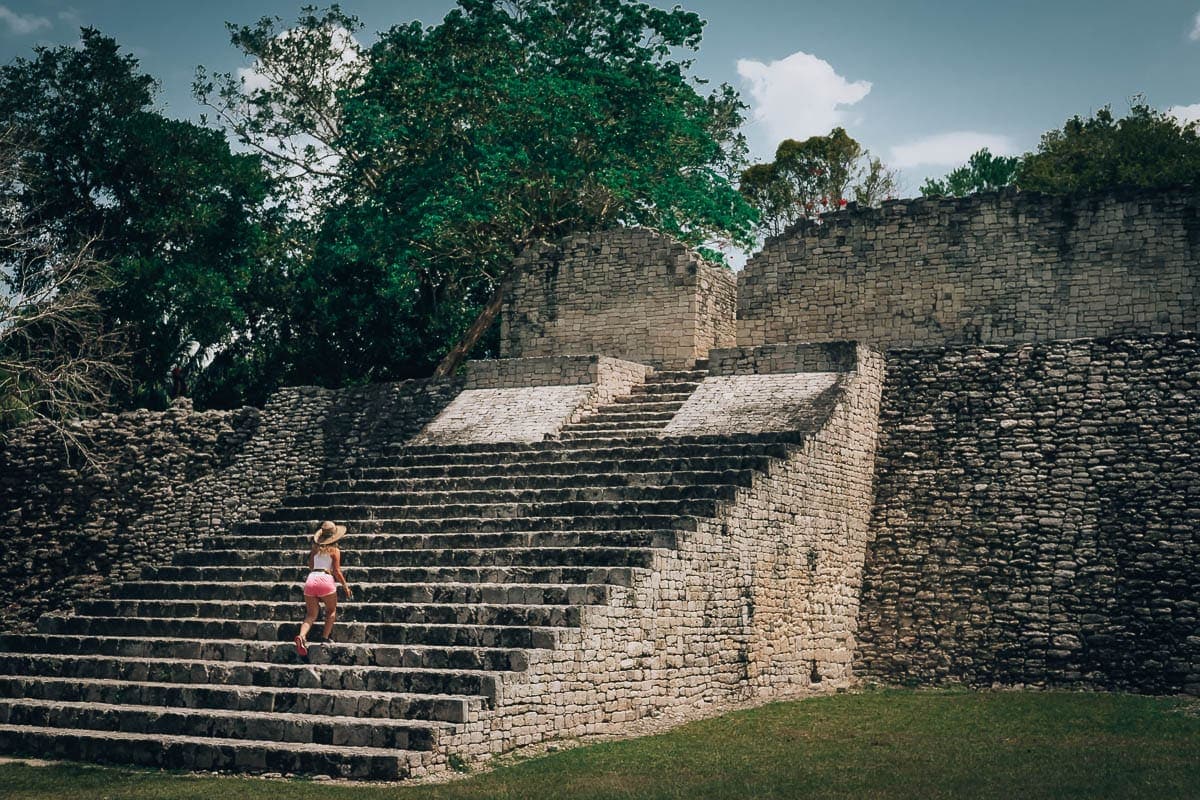
The last ruins we visited, and definitely worth a visit, are again in the middle of the jungle in the south of the Mexican province of Quintana Roo and are only 9 km from the nearest asphalt road.
The town of Kohunlich was probably founded around 200 BC, but most of the important buildings were not built until between the third and sixth centuries.
On the site you will find a total of 8 large groups of buildings that served as administrative centres, spiritual places, palaces and residential areas.
The fact that the entire city is deep in the jungle directly invites you to explore the wide surroundings. All-day shade allows you to spend long hours in the ruins.
- Admission: 70 pesos / 80 CZK
- Nearest town: Xpujil, Bacalar
- Opening hours: 8:00 – 17:00
- Website:
Zona Arqueológica Kohunlich
Map of the location of the Mayan ruins in Yucatán
Tips and tricks for travelling in Mexico
What to packTake a look at our Where to get ticketsSearch for cheap airline tickets at Car rentalWe commonly use a grader Reservation of accommodation
Don’t forget about insuranceTravel insurance is an absolute must. For shorter journeys, choose AXA ( Recommended Lonely Planet Yucatanguide |
